Looking to enter the online fitness industry? You’re eyeing a market that’s experiencing explosive growth. It’s a space where both innovative startups and seasoned brands are thriving, driven by a surging demand for fitness gear, apparel, supplements, and health foods.
However, this boom has led to a crowded field. The fitness ecommerce landscape is packed with competitors, all vying for consumer attention. In such a vibrant yet competitive market, making your presence felt is crucial.
And what better way to make an impact than with an intuitive and professional website? A well-crafted website acts as a magnet for customers, drawing them in with its ease of use, appealing design, and compelling content.
Below, we highlight a few fitness ecommerce brands that have really nailed their website strategy. Take inspiration from them, as they showcase the best practices in website design, user engagement, and brand presentation.



8 fitness ecommerce website examples
1. Altitude Sports: ecommerce search with a visual twist
Altitude Sports began as a small store in Montreal in the 1980s and now stands as a multimillion-dollar online retail leader in sports and fitness brands. This transformation from a brick-and-mortar shop to an ecommerce powerhouse marks its journey.
Embracing the digital world has been crucial to its success. Unlike many retailers who started with physical stores and struggled to make the leap to ecommerce, Altitude Sports charted a different course. The brand moved beyond relying solely on word-of-mouth and foot traffic for brand growth.
→ Click Here to Launch Your Online Business with Shopify
Its leap into the digital marketplace began with the launch of its online store in 1999. Since then, it has continuously evolved with technology, always staying ahead.
One of the most innovative aspects of the Altitude Sports website is its predictive search function.
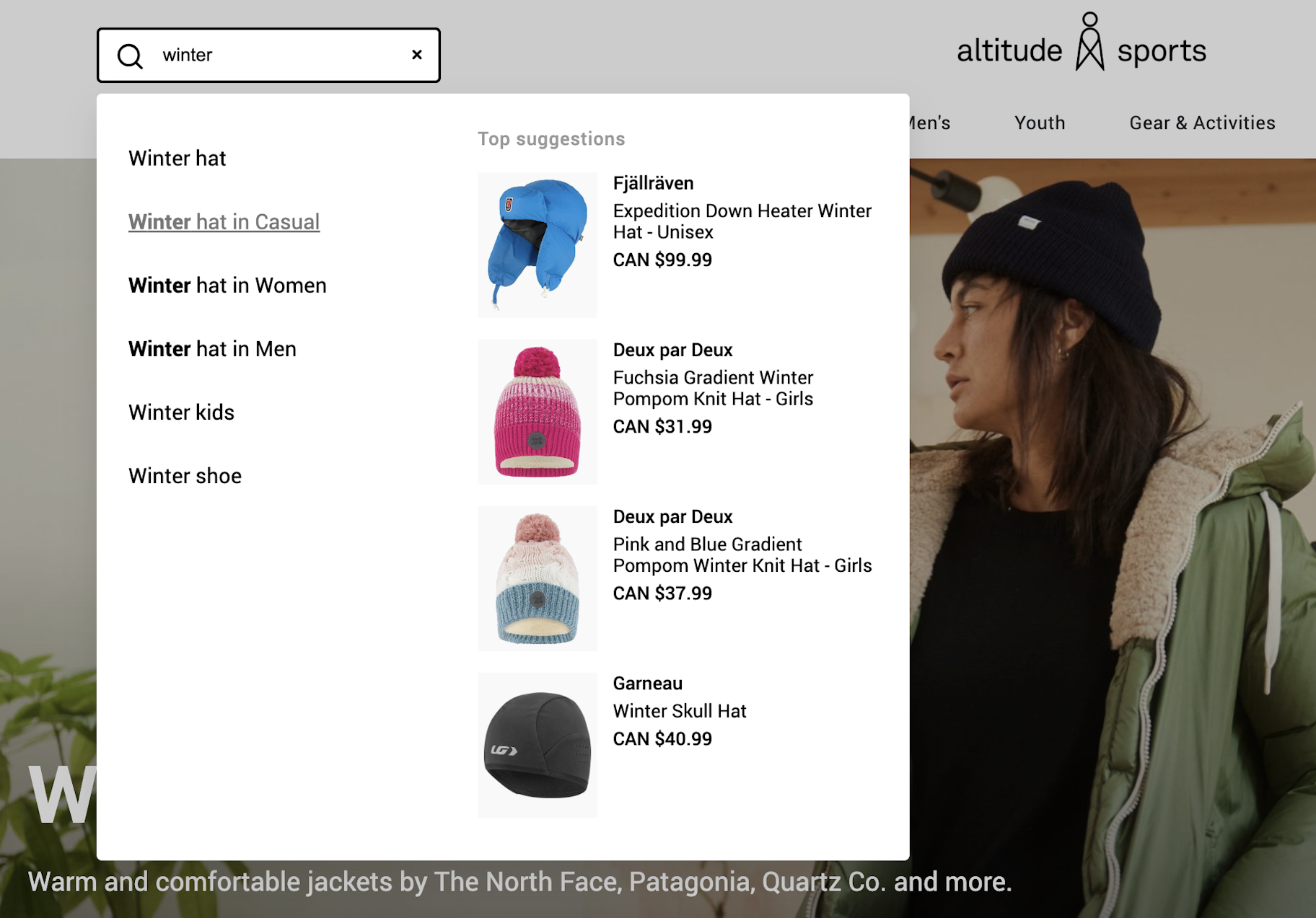
Powered by SearchSpring, this feature offers visual merchandising suggestions so that customers can see their options before clicking.
2. NOBULL: dropping products at midnight for loyal customers
When you’re up against big players like Adidas, Nike, and Rebook, you’ve got to step up your game. That’s exactly what NOBULL, a fitness brand, does. Its motto says it all: “For people who train hard with no excuses.”
This approach really shows in its midnight product launches, which are a big deal, often selling out quickly. There’s no excuse for website problems during these crunch times.
Marcus Wilson, NOBULL’s co-founder, breaks it down: “We launch our products at midnight, because right now demand greatly exceeds supply. This timing helps our loyal customers get a better shot at what they want.”
Even with this plan, the products can sell out fast. Sometimes, they’re gone before many get a chance to check out.
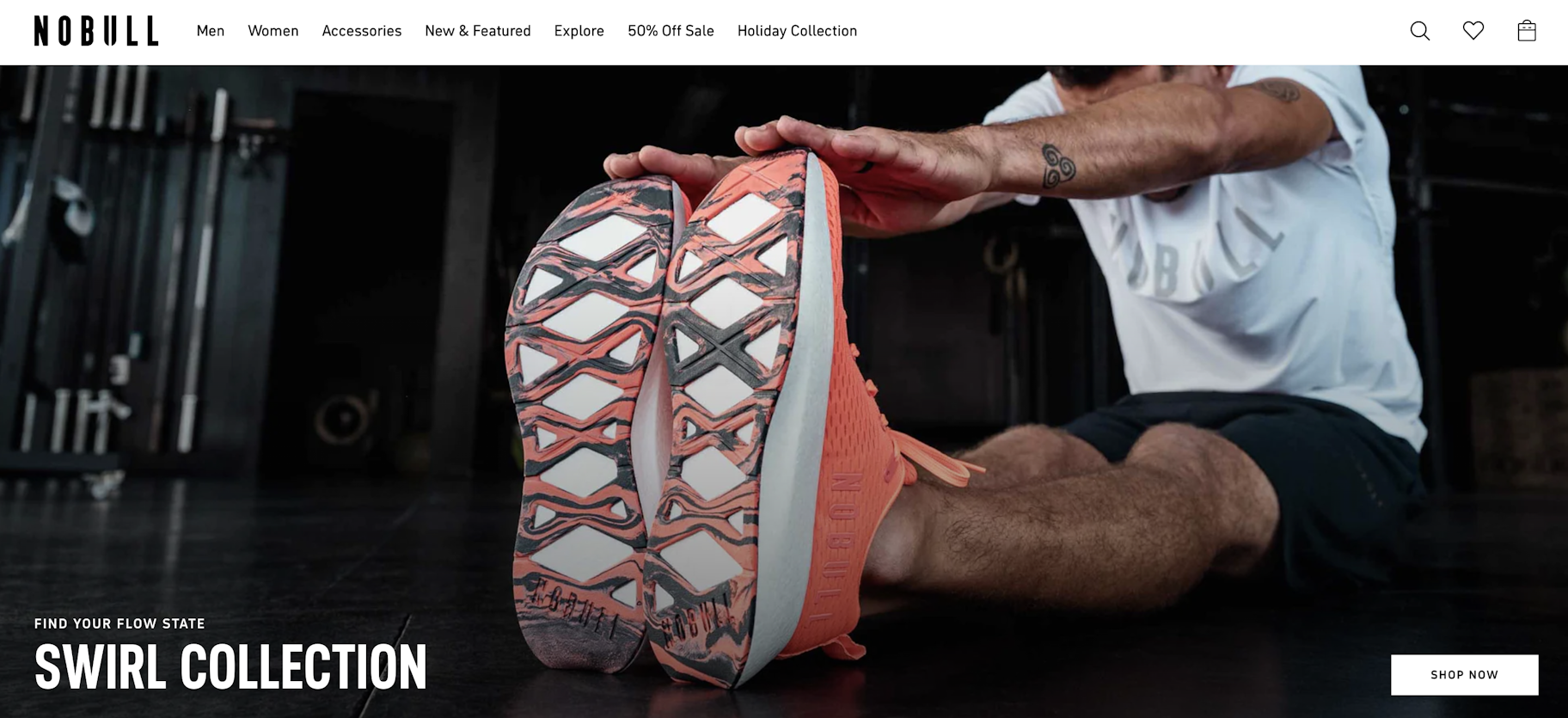
NOBULL’s experience teaches a key lesson. If you’re selling online, especially with high-demand products, your ecommerce platform needs to keep up. The only reason customers should miss out is if the product runs out, not because your website can’t handle the traffic.
3. Women’s Best: offering localized experiences to visitors
Women’s Best—a brand specializing in women’s supplements and vitamins— has become a global name by tailoring its ecommerce experience to different regions. It has set up 10 custom storefronts worldwide, each one showcasing its products in the local language and currency.
The strategy extends to social media too. On Instagram, Women’s Best has set up specific accounts for regions like Poland, Italy, and the Middle East. Each account caters to its audience in their own language and links to the localized ecommerce store.
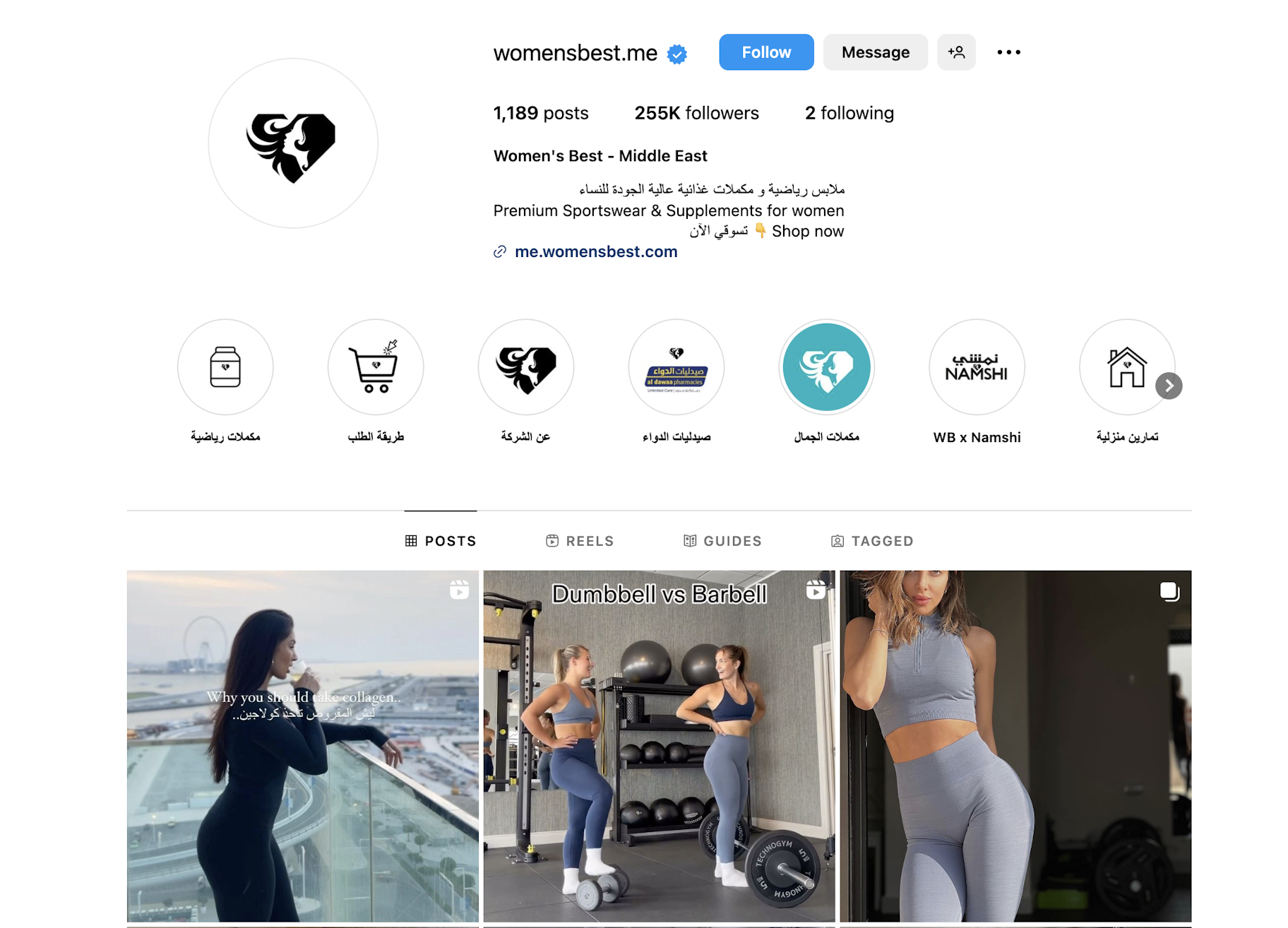
Women’s Best also offers a separate account for its apparel, Women’s Best Wear. By creating these targeted accounts, Women’s Best can build specific customer funnels based on customers’ locations or interests.
Additionally, Women’s Best has a separate Instagram account dedicated to its apparel line, Women’s Best Wear. This strategy allows it to cater to diverse customer interests and locations more effectively.
This multifaceted approach underscores a crucial point for global ecommerce success: acknowledging and adapting to the unique preferences of customers in different regions. Women’s Best’s use of varied Instagram accounts is a strategic way to engage with and satisfy the distinct needs of its international customer base.
4. Crossrope: Replatforming to scale efficiently
Can a fitness business centered around jump ropes make a big splash? Crossrope’s success story answers with a resounding yes. When the pandemic hit, people were forced to exercise at home. Crossroad’s team capitalized on this shift and heavily marketed its jump rope workout.
This strategic move paid off. Demand for Crossrope’s products soared, driving a significant increase in its online sales. However, the company wasn’t confident in its ecommerce platform’s ability to handle the influx of orders.
Chief marketing officer Srdjan Popovic reflected on an important decision the brand made: “Switching our ecommerce platform during a peak in sales was a risky move … but it paid off in a big way. It really helped us expand our reach internationally.”
Crossrope’s shift to Shopify Plus was a turning point for its growth. It saw a 90% increase in revenue and a 94% increase in transactions.

Crossrope’s journey offers a crucial lesson for upcoming sportswear and fitness brands: there’s no “right” time to make big changes. Taking bold steps, even amidst uncertainty, can pave the way for even greater success in the future.
5. Gymshark: thriving with O2O commerce
Gymshark has successfully gathered millions of loyal customers across 131 countries. Its approach? A multichannel online presence with a consistent brand aesthetic that’s so effective it even got mentioned by Sheryl Sandberg during a Facebook earnings call.
Taking its brand from URL to IRL, Gymshark excels in online-to-offline (O2O) commerce. It set up pop-up shops where fitness fans can meet popular fitness experts and influencers and buy Gymshark products in person.
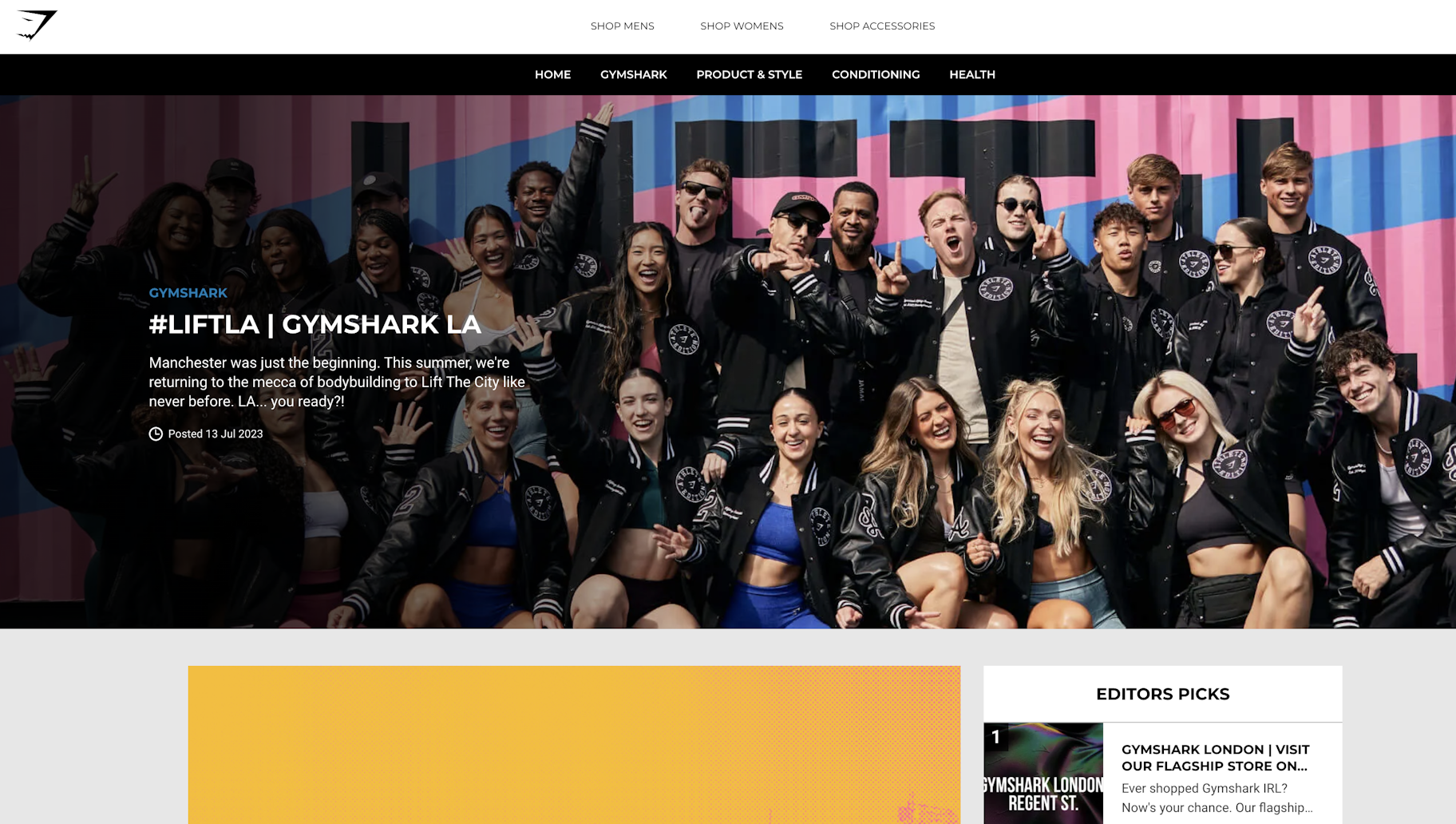
Daniel Knight, Gymshark’s website manager, highlights the impact of this strategy. “Our pop-up shops create a unique customer experience,” he says. “They link our digital presence with the physical world and offer emotional customer experiences that online interactions alone can’t provide.”
This strategy showcases Gymshark’s ability to seamlessly integrate digital and physical experiences, resonating powerfully with its customer base.
6. BPI Sports: establishing a D2C presence
BPI Sports’ products are a staple on the shelves of major fitness retailers like GNC, Vitamin World, and The Vitamin Shoppe. This Florida-based nutritional supplement brand is a recognized wholesaler, with most of its revenue coming from business-to-business (B2B) sales.
However, BPI Sports aspired to do more. It wanted to strengthen its direct-to-consumer (D2C) channel and transform the BPI Sports brand identity to be more than just a product on another store’s shelf.
The journey had its challenges. Its original website, costing over $6,000 in development, was a letdown. It frustrated customers and staff with frequent issues like crashing shopping carts and unreliable data.
Oliver Haroun, BPI Sports’ Director of Technology, describes the growth pains: “We were growing so fast, constantly pushing the boundaries. Then we hit a point where our business infrastructure couldn’t keep up.”
Facing this, BPI Sports decided on a new path. It moved away from its previous platform and opted for Shopify Plus to simplify its D2C channel, a move that paved the way for improved online sales and a better overall customer experience.
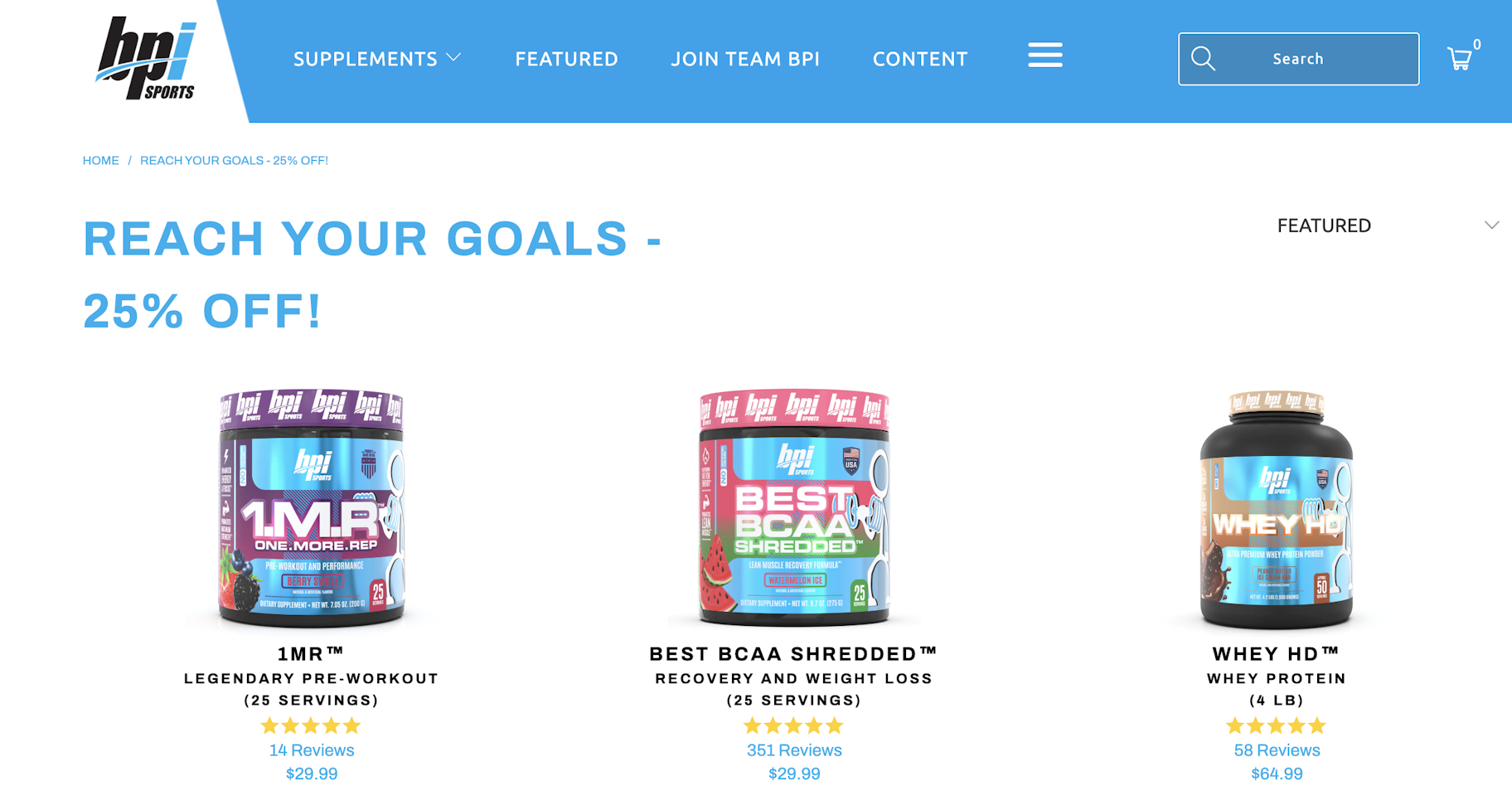
7. Fabletics: leveraging customer data to tailor its products
Fabletics is redefining the fitness clothing market with its VIP subscription membership. This approach offers customers specially curated monthly outfit selections at a lower price.
“We use customer data to forecast inventory,” says Dustin Netral, senior vice president at Fabletics, about the brand’s strategy. “We analyze past purchase patterns and connect them to transactions.”
The brand gets to know new members through seven precise questions about their lifestyle and style preferences. They also look at previous purchases to predict future preferences. This way, Fabletics tailors outfits to each member’s taste.
Moreover, Fabletics leverages its online data to improve the in-store experience for customers.
The takeaway? When you really get what your customers are all about, you can create something special for them.
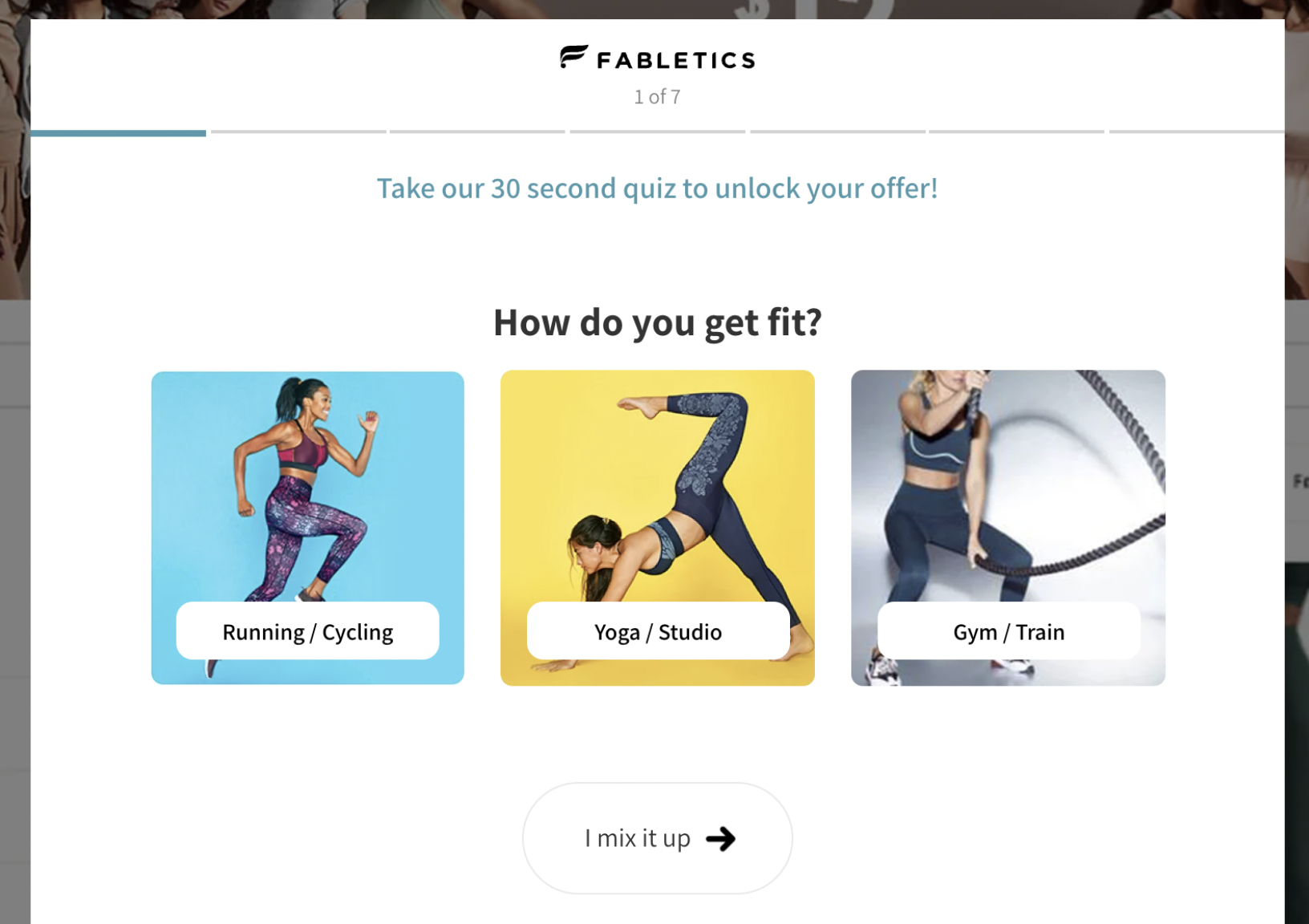
8. SweetLegs: simplicity takes you far
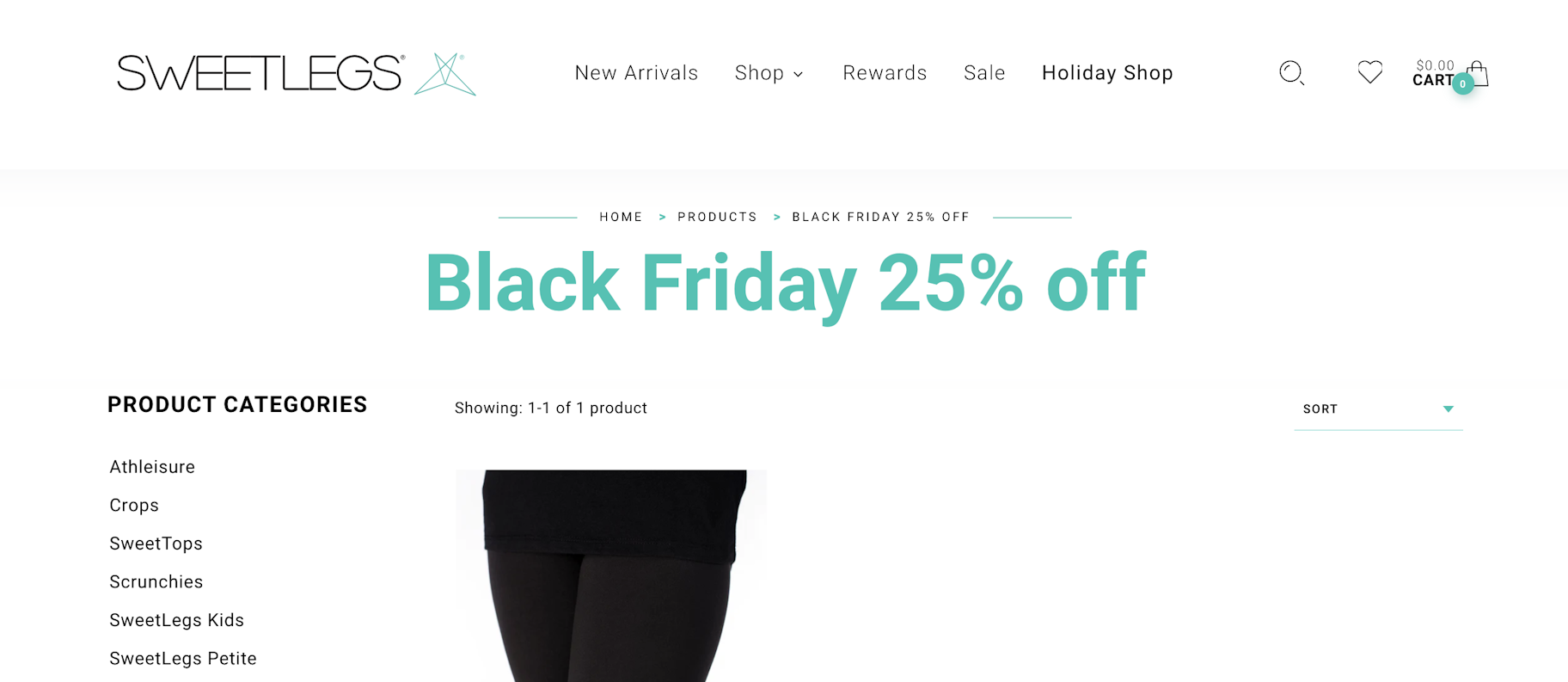
SweetLegs knows the power of simplicity. It sells leggings to women of all sizes, but it’s not just its inclusive products that make it stand out. It prefers simplicity over complex enterprise ecommerce platforms.
Back in 2016, SweetLegs’ website crashed during Black Friday, the busiest shopping weekend. That was a wake-up call for this multimillion-dollar brand. It knew it couldn’t risk another crash during the next holiday season.
So, just a month before Black Friday, it made a bold move to re-platform.
“On October 16, we chose a standard template. We paid a firm to migrate our data, and by November 1, we were up and running,” says CEO Chris Pafiolis.
That decision paid off big time. “In our busiest month ever, we hit $2 million in sales and over 10,000 transactions,” Chris says. “We had loads of traffic, but this time, no worries about crashing the site. We could focus on growing our business!”
This shift to simplicity was a game-changer for SweetLegs. It’s allowed it to focus on what really matters, fueling its growth and ensuring smooth transactions ever since.
How to create your own fitness ecommerce store
Creating a strong online fitness brand requires a well-written business plan. Start by identifying a niche, proving there’s demand, and laying a foundation for your business to grow. With that in place, you can begin building the ecommerce and marketing setup needed for big growth.
Here’s how to get started:
Figure out what to sell
The fitness world is huge, offering lots of opportunities for new businesses. Deciding what to sell can be tough. Should you offer physical goods, digital products, subscriptions, or a combination of both?
The answer depends on who your potential customers are and the problem they want to address. Think about your audience and what they need before you start your fitness ecommerce store.
Tips for choosing products:
- Solve a real problem
- Find a specific niche
- Use your own passions as a guide
- Sell your expertise
- Keep an eye on fitness trends for demand and growth
You could sell physical products like fitness equipment, clothing, or supplements. Or, if you’re a fitness pro, think about offering online classes, workout plans, or subscription programs.
Pick your business model
After deciding on your product, choose your ecommerce business model.
Common models include retail, wholesale, private label, and subscription. Think about your product and customer to find what fits best. You might even use multiple models, like combining retail with subscription-based classes.
Consider sales and marketing tactics too. This could be building a community, flash sales, omnichannel ecommerce, or social media selling.
Select an ecommerce platform
Next, pick your commerce platform. Consider software-as-a-service (SaaS), on-premise, or cloud platforms. For scalability and ease of use, a SaaS platform is often recommended.
Look for a platform that offers:
- High reliability
- PCI compliance
- Sales channel integrations
- Inventory management
- Scalability
- Quick checkout and payments
Shopify, for instance, offers reliable hosting and a high-converting checkout experience.
Launch your store
Finally, when your site is ready, you’ll go live. Before that, test everything thoroughly. Plan the launch time, have someone ready to troubleshoot, and ensure you have a backup plan. Post-launch, keep testing and monitoring everything from checkout functionality to SEO and traffic.
Is the fitness ecommerce market growing?
The fitness ecommerce market is growing at an impressive rate of 38.2% each year. By 2028, it’s expected to reach a staggering $64.57 billion. This trend highlights the increasing interest in online fitness solutions and their potential for massive growth.
The fitness ecommerce market is wide open for entrepreneurs with vision and drive. With the right strategies and insights, scaling up your business can be an exciting journey.
Gear up for success in fitness ecommerce
What can we take away from the success stories in this sector?
- Integrating online and offline strategies solidifies customer relationships.
- Keeping users engaged is crucial for building loyalty.
- Using customer data smartly can guide your business decisions.
- Offering localized experiences is key to making a global impact.
Remember, it’s not just about stepping into the market. You need to make a splash. Think beyond traditional approaches. Innovate, connect, and watch your fitness ecommerce business soar.






